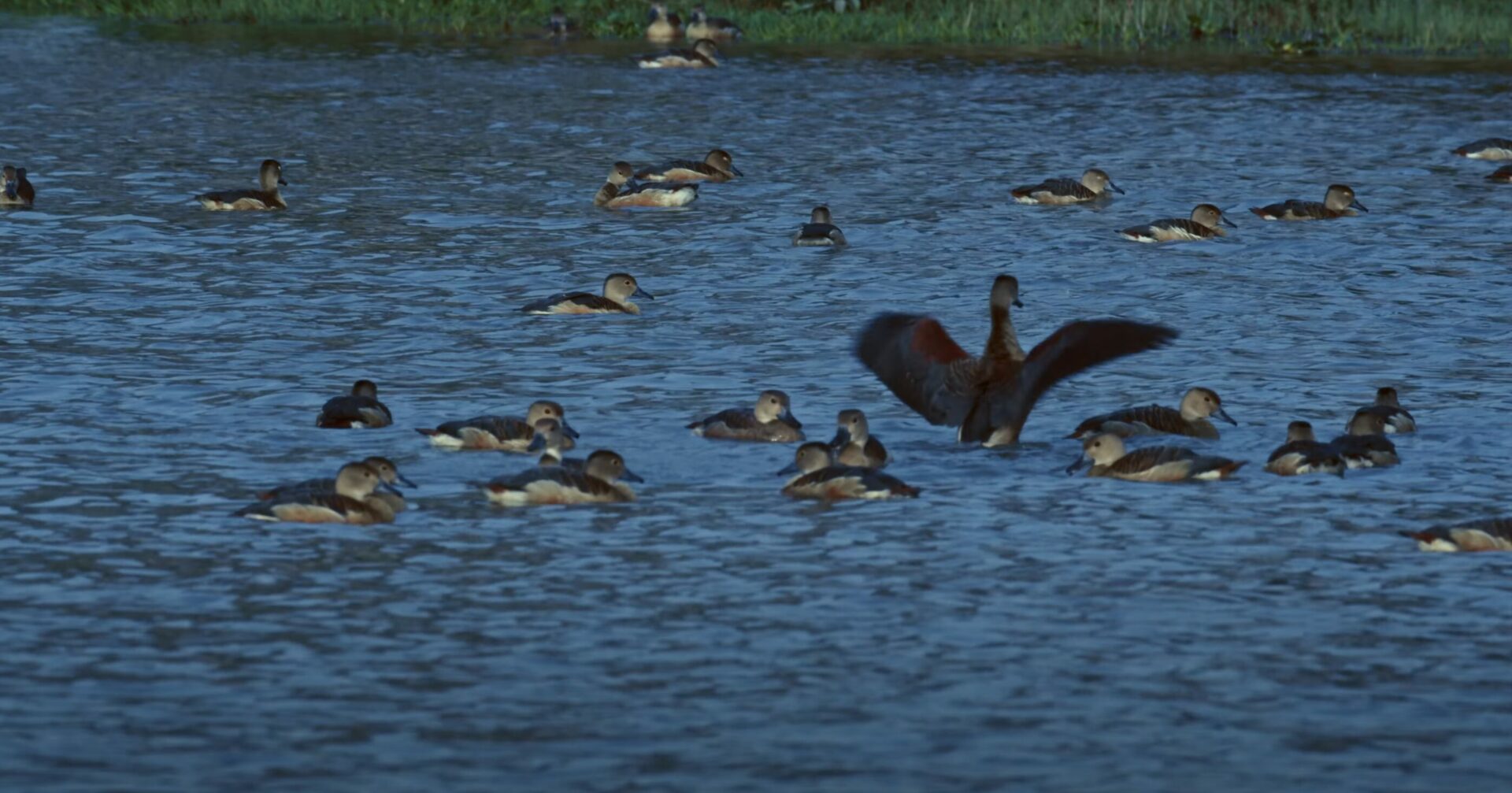Introduction
Briefly describe Sreemangal as a “birdwatching paradise” known for its “wetlands” and “tea gardens.”
Introduce the “lesser whistling duck (Dendrocygna javanica) as a charming bird species found in Sreemangal.
Habitat and Distribution
Highlight the lesser whistling duck’s preference for “freshwater wetlands” like “lakes, marshes, ponds” with abundant “aquatic vegetation.”
Mention their presence in Sreemangal’s “wetlands” and “tea estates.”
Physical Characteristics
Emphasize their “small size” and distinctive “whistling call.”
Describe their plumage as “brown with white spots” and mention their “long neck and legs” for wading, and “broad beak” for feeding.
Behavior and Lifestyle
Focus on their “nocturnal” habits and keen senses for finding prey.
Mention their “social behavior” in flocks and “monogamous breeding” near water bodies.
Migration Patterns
Explain that some populations are “sedentary” while others are “migratory” seeking suitable “breeding grounds” and food.
Briefly touch on factors like “weather” and “food availability” influencing migration in Sreemangal.
Conservation Status
While mentioning them as “common,” highlight threats like “habitat loss, pollution, hunting.”
Focus on “conservation efforts” by local authorities and organizations protecting Sreemangal’s “wetland habitats.”
Role in Ecosystem
Emphasize their role in controlling “insect populations” and dispersing “plant seeds.”
Mention their importance as indicators of “wetland health.”
Interactions with Humans
Briefly discuss their “cultural significance” in Sreemangal.
Highlight the impact of human activities like “habitat destruction” and “pollution.”
Mention efforts to raise awareness and promote “sustainable practices.”
Observation and Birdwatching
Recommend prime locations like “Lawachara National Park wetlands” and “Satchari National Park tea gardens” for birdwatching.
Emphasize the importance of “patience” and “observation skills” for spotting them.
Challenges and Opportunities
Briefly discuss challenges like “habitat restoration” and “wildlife protection.”
Highlight opportunities for “positive change” through community engagement and “sustainable management.”
Conclusion
Reiterate the “beauty” and “biodiversity” the lesser whistling duck brings to Sreemangal.
Emphasize the importance of “conservation” for preserving Sreemangal’s unique “natural heritage.”
FAQs
What is the lesser whistling duck’s main diet? Aquatic insects, plants, and seeds.
How can I identify a lesser whistling duck? Look for a small brown duck with white spots, a long neck, and a high-pitched whistle call.
Are lesser whistling ducks aggressive towards other species? No, they are generally peaceful.exclamation
What are the major threats to lesser whistling ducks in Sreemangal? Habitat loss, pollution, and hunting.
How can I contribute to the conservation of lesser whistling ducks? Raise awareness, participate in conservation initiatives, and practice responsible eco-tourism.
By incorporating these SEO-friendly keywords throughout the text, your content will be more discoverable by people searching for information about lesser whistling ducks, birdwatching in Sreemangal, and the region’s wetlands.

Recent Comments